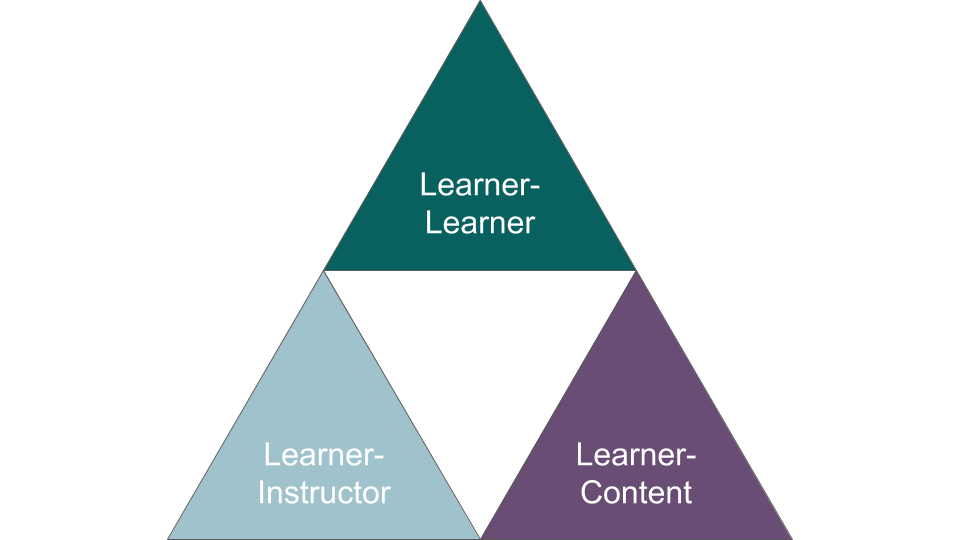“The computer is merely the vehicle that provides the processing capability and delivers the instruction to learners.”
Clark (2001) in Anderson, T. (2008 p.16)
“For learners, online learning knows no time zones, and location and distance are not issues. In asynchronous online learning, students can access the online materials anytime, while synchronous online learning allows for real-time interaction between students and instructors.”
Anderson, T. (2008, p17)

Facilitating any kind of Interaction
Communication is Key
- Clarify expectations
- Who: individually, groups, the class
- What: discuss, journal, explore, respond, etc.
- Where: email, discussion forums, wiki, etc.
- When: in the context of the course and calendar
- Why: how does this related to the course overall and/or the assignments
- How: specific tools or document types, Netiquette
- Be present, but not overbearing
- Acknowledge student contributions


